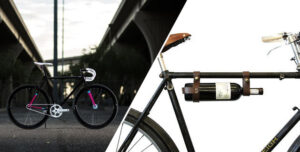Battery scooties, or electric scooters, have become a popular choice for urban commuting due to their eco-friendliness, cost-efficiency, and convenience.
However, with a wide variety of models and features available, choosing the right battery scooty can be a daunting task. This guide will help you understand the key factors to consider when selecting the perfect battery scooty for your needs.
1. Determine Your Commuting Needs
a. Distance and Range
- Consideration: Assess your daily commuting distance. Choose a scooty with a range that comfortably covers your round-trip distance plus a buffer for unexpected detours or errands.
- Example: If your daily commute is 10 miles, opt for a scooty with at least a 20-mile range.
b. Speed Requirements
- Consideration: Consider the speed limits of your typical routes and your need for speed. Urban commuters may find 15-20 mph sufficient, while those in less congested areas might prefer higher speeds.
- Example: For city commutes, a top speed of 15-20 mph is usually adequate.
2. Evaluate Battery and Charging
a. Battery Type and Capacity
- Consideration: Look at the battery type (Li-ion is common and preferred) and its capacity, usually measured in watt-hours (Wh). A higher capacity means longer range.
- Example: A 300-500 Wh battery is suitable for moderate daily use.
b. Charging Time
- Consideration: Check the charging time and ensure it fits your schedule. Faster charging can be more convenient but might cost more.
- Example: A scooty with a 4-6 hour charging time is generally acceptable for overnight charging.
3. Assess Build and Design
a. Weight and Portability
- Consideration: Consider the weight of the scooty, especially if you need to carry it upstairs or lift it frequently. Lighter models are easier to handle.
- Example: Models weighing under 30 pounds are more portable.
b. Build Quality and Durability
- Consideration: Look for a robust frame and quality materials to ensure durability, especially if you plan to use the scooty daily.
- Example: Aluminum or carbon fiber frames offer good strength-to-weight ratios.
4. Safety Features
a. Braking System
- Consideration: Ensure the scooty has reliable braking systems, such as disc brakes or regenerative braking, for safe stopping.
- Example: Dual braking systems (electronic and mechanical) provide added safety.
b. Lights and Reflectors
- Consideration: Good visibility is crucial, especially for night rides. Check for front and rear lights, as well as reflectors.
- Example: LED lights with high lumens and reflectors on all sides increase visibility.
c. Tires and Suspension
- Consideration: Pneumatic (air-filled) tires provide better shock absorption than solid tires. A suspension system adds comfort on bumpy roads.
- Example: For urban riding, 8-10 inch pneumatic tires with front or dual suspension are ideal.
5. Tech Features and Extras
a. Display and Controls
- Consideration: A clear display showing speed, battery level, and other metrics is useful. Easy-to-reach controls enhance safety and convenience.
- Example: LCD or LED displays with intuitive control buttons are user-friendly.
b. Connectivity and Apps
- Consideration: Some scooties offer Bluetooth connectivity and companion apps for tracking rides, adjusting settings, and firmware updates.
- Example: Scooties with app integration offer enhanced user experience through customizable settings and ride statistics.
6. Budget and Cost of Ownership
a. Initial Cost
- Consideration: Determine your budget and compare models within that range, balancing features, performance, and quality.
- Example: Mid-range scooties ($400-$800) often provide a good balance of features and durability.
b. Maintenance and Operating Costs
- Consideration: Factor in maintenance costs, such as tire replacements and battery life. Electric scooters typically have lower operating costs than gas-powered alternatives.
- Example: Lithium-ion batteries generally last longer and require less maintenance than older battery types.
7. Reviews and Brand Reputation
a. Customer Reviews
- Consideration: Read user reviews to get real-world insights into the performance and reliability of the scooty.
- Example: Look for reviews highlighting battery performance, build quality, and customer service experiences.
b. Brand Reputation
- Consideration: Choose reputable brands known for quality and customer support.
- Example: Brands like Xiaomi, Segway, and Ather are well-regarded in the electric scooter market.
Conclusion
Selecting the right battery scooty involves considering various factors such as your commuting needs, battery and charging specifications, build quality, safety features, tech integrations, and budget.
By thoroughly evaluating these aspects and researching different models and brands, you can find a battery scooty that perfectly matches your lifestyle and requirements.
Investing time in making an informed decision will ensure you enjoy a reliable, efficient, and enjoyable riding experience.



